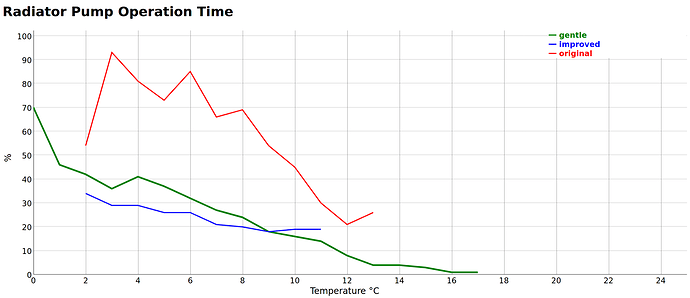Just an FYI, we have a 14kW Ecodan in a 4-bed 1822 house and it’s trundling along fine. We did get new rads though. Our insulation is lousy.
Here’s the last couple of days which has been unusually intense because it went down to -7 °C (yep I know that’s not cold for lots of people here  )
)
Notably we didn’t have the flow up to even 40 °C most of the time.
I’ve never seen the pumps run that much. It settled in at about one-third output (5kW) all through the night when it was “cold”.
Here’s the pump running stats from the same time window:
Those images are from my app running in EmonCMS.
Here’s some other stats I collected which shows the proportion of the time the radiator pump was running based on the average temperature for the day. I’ve used three different control algorithms over time. We’re using “gentle” these days and you can see it never ran for 18 hours a day because we like to turn it off and let it settle.
The MMSP system Mitsubishi provide doesn’t have a flow rate but our Grundfoss UPM3 Auto L is doing between 25 and 70 l/min I believe.
Not sure if that helps much.


